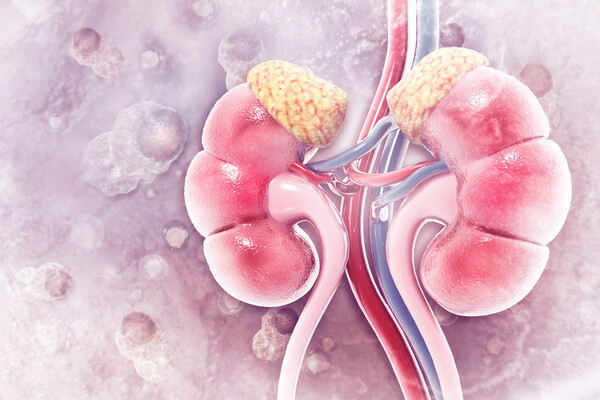
Amid the rapid increase of end-stage renal failure, which requires dialysis or kidney transplantation, kidney infarction has also shown a marked rise, sending an alarm signal for kidney health among Koreans.
Kidney infarction is a disease where the blood vessels supplying blood to the kidneys become blocked, causing necrosis of the kidney tissue and severe abdominal pain, fever, vomiting, and hematuria. However, the symptoms are non-specific in the early stages of the disease, often delaying diagnosis.
Soon Chun Hyang University Hospital Bucheon said Wednesday that a research team, led by Professors Seo Jon and Moon In-ki of the Department of Cardiology examined 10,496 adults diagnosed with kidney infarction from 2013 to 2019 using data from the National Health Insurance Service to determine the epidemiological characteristics of kidney infarction.
The results showed that the seven-year incidence rate increased from 2.68 to 3.06 per 100,000 person-years. The incidence tended to increase with age, with the highest incidence in people in their 70s. Men were 1.41 times more likely to have a kidney attack than women. Hypertension was the most common comorbid condition, followed by dyslipidemia and diabetes.
The highest incidence was among those with high risk for "renal thrombosis," in which blood vessels are blocked by blood clots produced by disease or trauma to the kidney arteries, with 29.1 percent, followed by "thromboembolism," in which blood clots from outside the kidneys travel in the bloodstream and block kidney blood vessels, with 16.6 percent; and "hypercoagulable states," such as cancer, autoimmune diseases, and polycythemia vera, with 13.7 percent.
Among the antithrombotic drugs prescribed to treat kidney infarction, oral antiplatelet drugs, such as aspirin, gradually decreased from 17 percent to 13 percent of the total. Prescriptions for oral anticoagulants remained similar at around 35 percent. Among anticoagulants, the proportion of DOACs (non-vitamin K antagonistic oral anticoagulants) increased significantly from 1.4 [percent to 17.6 percent.
"Kidney infarction has a low incidence rate, which has made it difficult to conduct large-scale studies on patients' short- and long-term clinical outcomes. As a result, clear standard treatment guidelines have not been established,” Professor Moon said. “This study is the first large-scale study to identify the incidence, comorbidities, and treatment trends of kidney infarction based on data from Korean kidney infarction patients, which will greatly benefit the medical field."
Professor Seo said, "Considering the recent increase in the incidence of renal infarction in Korea, the aging population, and the high prevalence of thrombogenic risk factors, such as hypertension, diabetes, and hyperlipidemia, further research is needed to raise awareness of renal infarction and establish optimal treatment strategies."

